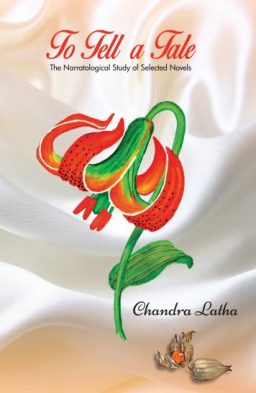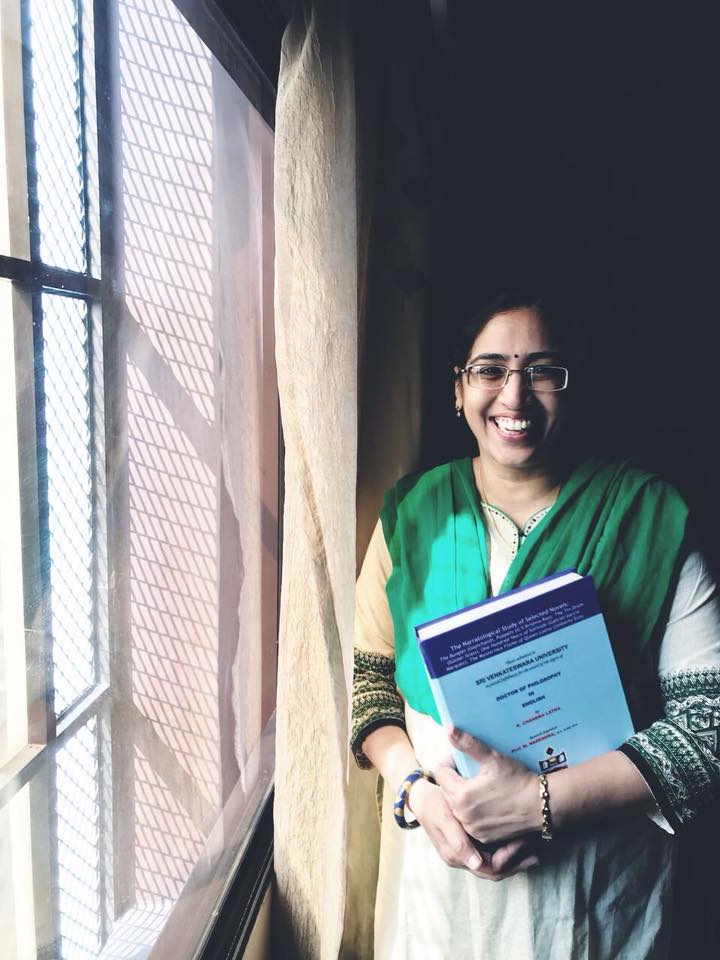
To tell a tale-6
-Chandra Latha
Chapter-I
(Part-5)
Geoffrey Chaucer, a 14th century British poet followed the narrative style of the Decameron with the similar narrative frame work in The Canterbury Tales (1386). Most of it was written in verse but some of the tales were written in prose. But the European literary world was overwhelmed by the romances and chivalries, until Cervantes’s Don Quixote de la Mancha (Spanish 1605-15), satirized chivalry, brought the prose fiction down to earth. Don Quixote has the distinction of being the pioneering work of the modern western literature. Many literary critics and historians like Harold Bloom categorized Don Quixote as the first modern novel. It has an episodic narrative structure, written in the picaresque style of the 16th century. The novel takes place over a long period of time, including many adventures, united by common themes of the nature of reality, reading and dialogue in general.
Thus, the modern novel emerged and evolved as a concoction of adventure, romance with verisimilitude in which the protagonists were not superhuman but, insignificant no-bodies. By the latter half of the 19th century, increasing modern education, development in woman literacy and the public lending libraries opened up literature to the masses and the novel became ubiquitous. The novels with simple language, ordinary themes, and common people attracted majority of the readers. They had ushered a new world of individualistic fashion, personal views, intimate feelings, secret anxieties, conduct and gallantry.
Oroonako is a short prose fiction, which is considered as the first English prose fiction to show black Africans in sympathetic manner. But, Aphra Behn’s epistolary novel The love letters between a nobleman and his sister (1683) is five years earlier than Oroonako.
John Bunyan (The Pilgrim’s Progress, 1678), Daniel Defoe (Robinson Crusoe, 1719), Jonathan Swift (The Gulliver’s Travels) and Joseph Addison and Richard Steele are considered the forerunners of the English novel where as Samuel Richardson (Pamela), Henry Fielding (Joseph Andrews), Tobias Smollett (The Adventures of Humphrey Clinker) and Laurence Sterne (Tristan Sandy) are considered the pioneers of it.
The Pilgrim’s Progress is a religious allegory in which the characters are as signs and symbols of abstract ideas, and the pilgrim, Christian, represents the idea of devout faith. In modern novels, characters often change and evolve like individuals, where as the characters in The Pilgrim’s Progress seldom change and display individual personality. Daniel Defoe‘s Robinson Crusoe (1719) opened up the new adventure world to the modern European novel. It is in epistolary, confessional and didactic in form. Following the first person narrative technique, Robinson Crusoe presents an optimistic account of human capability marking the beginning of realism and individualism.
Jonathan Swift’s The Gulliver’s Travels is also an allegory of the contemporary period. The first person narrative technique Swift used made it authentic giving the touch of credibility. But it is also a picaresque work, a loose stringing of six voyages of Gulliver which, as a whole, lack an organic unity. The Coverley Papers in The Spectator written by Richard Steele and Joseph Addison do contain episodes and characters but they don’t complement together to have an organic plot.
Samuel Richardson got the idea of writing a long prose narrative while editing and composing Familiar letters and based on one of those letters he wrote Pamela, an epistolary novel. Henry Fielding wrote a parody to Pamela entitled Shamela in the same narrative technique , epistolary method, but then he recast it as a picaresque novel by choosing Don Quixote as a second model for it. He called it The History of the Adventures of Joseph Andrews and of his Friend Mr. Abraham Adams. Tobias Smollett followed the same picaresque tradition and wrote a series of novels like The Adventures of Roderick Random. In Laurence Sterne’s The Life and Opinions of Tristram Shandy, Gentleman Tristram narrates his life story and he cannot explain anything simply as he often makes explanatory diversions to add context and color to his tale.
Mikhail Bhaktin traces out the roots of the novel in the oral tradition of the folk tale that has no narrative structures or rules of narration. By nature, novel is an organic and ever emerging literary genre. “Novel is a genre of becoming” says M.M.Bhakthin. “In the process of becoming the dominant genre, the novel speaks the renovation of the all other genres, it infects them with its spirit of process and inconclusiveness. The novel is determined by the experience, knowledge and practice (the future) where as epic is dependent on memory. (M.M. Bhakthin, The Dialogical Imagination, 2006, University of Texas Press. Pg.17)
The basic characteristics of the novel are organically interrelated and all have been powerfully affected by a very specific rupture in the history of European civilization, its emergence from a socially isolated and culturally deaf semi-patriarchal society and it’s entrance into the international and inter-lingual contacts and relationships. A multitude of different languages, cultures and times became available Europe, and this became a decisive part of daily life and thought.” (M.M. Bhakthin, Pg.17)
The novel comes into contact with the spontaneity of the inconclusive present which keeps it from congealing. The novelist is drawn towards everything that is not yet completed. In contrast to other major genres, the novel emerged and matured precisely when intense manifestation of external and internal polyglossia was at the peak of its activity which is its native element.
There are some basic characteristics that fundamentally distinguish the novel from the other genres. It has a stylistic three dimensionality which is linked with the multi-language consciousness. It effects a radical change in the temporal coordinates of the literary image. And finally, the new zone opened by the novel for structuring literary images provides the zone of maximal contact with the present (with the contemporary reality) in all its openness.
Novel written in a particular language and representing a particular culture does not confine itself to the particular language, culture or people. As the mobility of people become global, novel travelled all over the globe with the help of translations. The readership of novel is has no boundaries and the market for novel is open.
In the changed worldwide market of the novel does not really need a novel tailored for international market. The novelists are products of their times and societies.
“When the novel becomes the dominant genre, epistemology becomes the dominant discipline, Contemporaneous nature, flowing and transitory; low present” life without beginning and end”(M.M.Bhakthin, Pg 20.) was a subject of representation only in the lower genres. Most importantly, it was the basic subject matter in that broadest and richest of realms, the common people’s creative culture of laughter. In popular laughter, the authentic folkloric roots of the novel are to be sought.” argues M.M. Bhaktin and he further adds that, “the novel pushes past the limits of any given ecology of genres. Open ended and unfinished in itself, the novel undermines the givenness of all earlier forms .It destabilizes the artificial features of the existing canons.” (M.M.Bhakthin, Pg.20)
The narration in the novel is more complex than the narrator’s voice. “The novel is, by nature, poly-phonic,” Bhakthin observes. “Voices raise within and speak to each other.” The carefully set narrative tone and the voices that raise throughout the novel, some heard and some unheard, makes the novel more interestingly independent of the novelist. (M.M.Bhakthin, Pg.20)
Velcheru Narayana Rao and David Shulman rightly observe that “Words systematically patterned, are definitive. But, within the densely conceptualized connectedness, there exists a space for diversity and highly individualized perspectives and nunances – tat-tad-avayava – vakya – tatparya – bhedhamulu. Each part of the narrative works like a limb, avayava, of the larger statement, and each limb has its own expressive force. This is the vision of the novelist. They elaborated to explain further, “in this sense the novel is filled with in which issues of multiple realities can be worked out, played with, liberated into form.” (Velcheru Narayana Rao and David Shulman The Sound of the Kiss, or the Story that Must be Told. Pingali Suranna’s Kaḷāpūrṇōdayamu, Columbia University Press. 2002. Introduction page)
The narrative form of the novel evolved over the generations. The period- novel often outlived the times of readers. The novel in particular place, travelled across the borders of languages, cultures, politics and geographies. Novel documented nuances overlooked, undermined or ignored by history. Novel is now synonymous with the human experiences beyond the unities of time and place. The artistic abilities of novelists perfected the novel craftsmanship, generation after generation, inspiring each other. There has been vivid narrative experimentation throughout. And, the novel survived and prevailed as the most influential and popular literary genre over centuries. As John, Manfred observes, “Novels are an extremely rich and varied medium. Everything you can find in other types of narrative you find in the novel, most of what you find in the novel you can find in other types of narrative, whether in non- fiction ,natural narrative , drama, film etc.” (Jahn, Manfred. 2005. Narratology: A Guide to the Theory of Narrative. English Department, University of Cologne. (http://www.uni-koeln.de/~ame02/ pppn. htm)
Interestingly, there is a constant transmigration of narratives from one genre to the other. Many novels are made into dramas, films and so on. Some of the films, dramas and opera scripts are published later as novels. This narrative migration happened so naturally and frequently that the significant influence on each other is often blurred or overlapped.
The present study makes a humble attempt to analyze how each of the selected novels assimilates different narrative types and evolves into unique narrative structures. The distinct and common narrative features, techniques and skills are discussed in detail. This study is focused more on how the story is narrated than what is narrated and how the form of the novel shaped the theme.
The novels chosen for the present study are The Bungler (Gopichand, 1946), Puppets (G.V.Krishna Rao, 1951), The Tin Drum (Gunter Grass, 1959), One Hundred Years of Solitude (Gabriel Garcia Marquez,1967), The Mysterious Flame of Queen Loana (Umberto Eco, 2004).
*****
(Contd..)

Chandra Latha, writer from Nellore won Telugu Association of North America award in 1997 for the novel “Regadi vittulu”. Her other novels are Vardhani(1995) and Vallu veellu paarijaataalu (2011). Her short fiction includes nearly 80 stories compiled in nenu nanna navutha (1996),Idam shareeram (2003) and vivarnam(2007). Her non-fiction are (Fish can fly!) ”vacche daretu(2010), itanala kadaku eeboothi boTlu(2010). And also published her blogposts in a book madata pejee(2010).
